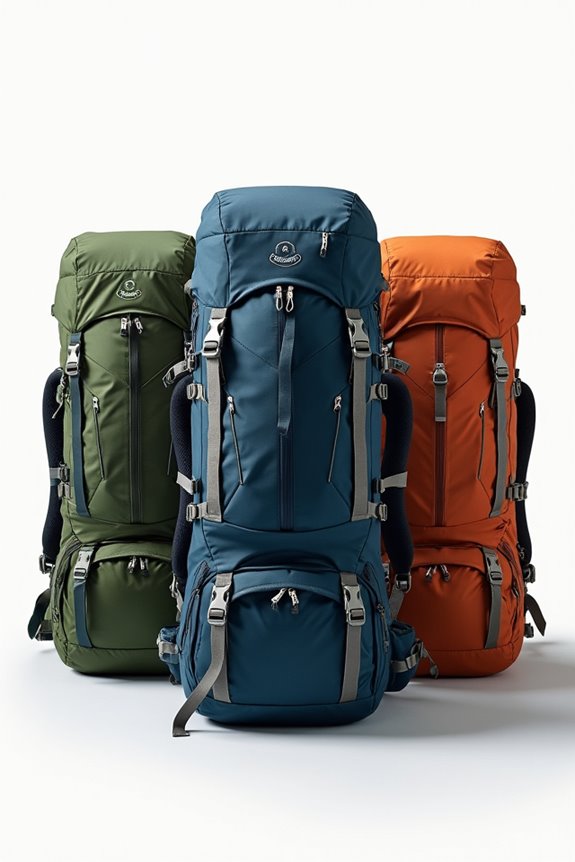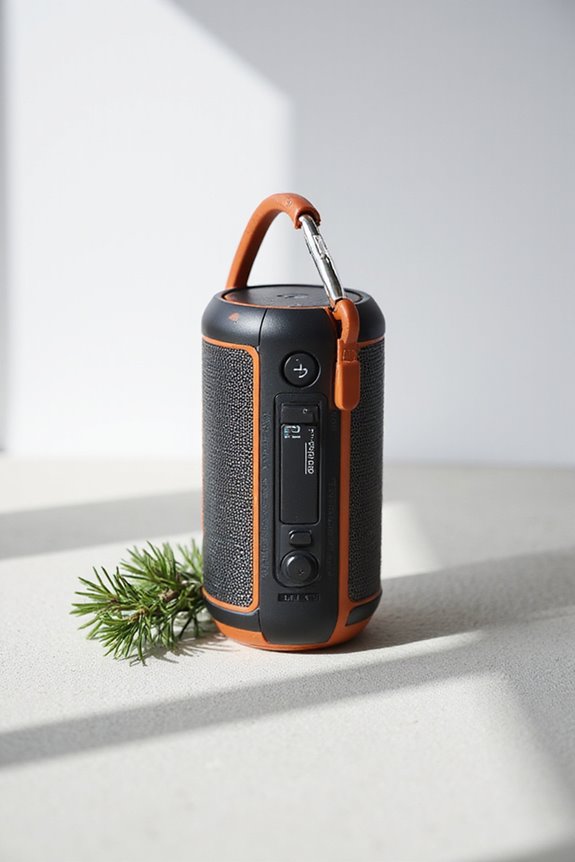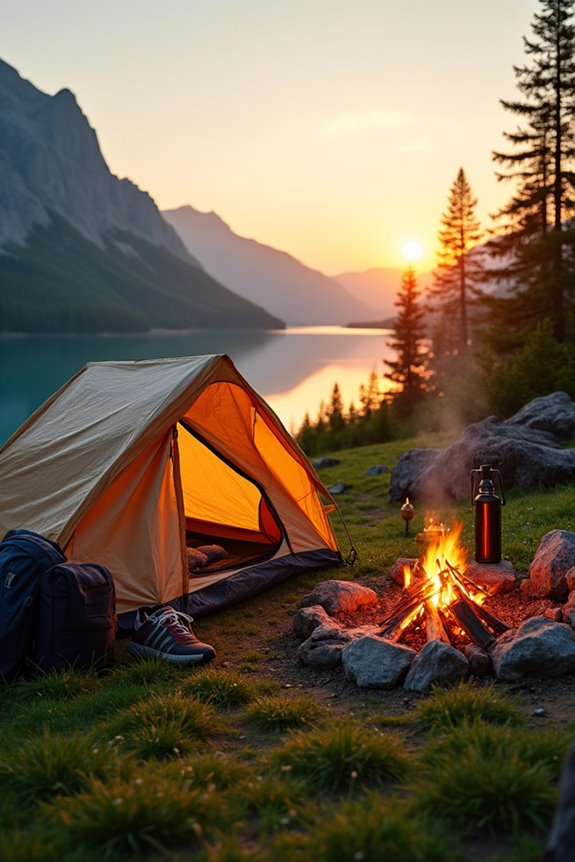Choosing a backpack for backpacking can feel overwhelming, but it’s easier than it seems! First, think about your trip length—25-30 liters is perfect for a weekend, while longer adventures need more space. Weather and terrain also matter; layers and water resistance are key. Check for a comfy fit by adjusting straps. Look for durable materials and plenty of pockets for gear. Each detail counts, and surprisingly, there’s more to discover about making the perfect choice!
Key Takeaways
- Determine the ideal backpack size based on trip duration: 25-30 liters for weekends, 30-45 liters for longer excursions, and 35-50 liters for week-long trips.
- Consider weather conditions and terrain; pack layers for unpredictable climates and ensure waterproof compartments for wet environments.
- Choose a pack that offers comfort through features like internal frames for stability, adjustable harnesses for fit, and ventilation to reduce sweat.
- Assess durability by selecting high-denier fabrics, abrasion-resistant materials, and features like reinforced seams and sturdy zippers to withstand rough trails.
- Ensure proper fit by measuring your torso and trying on packs to achieve snug straps and correct load distribution for comfort during hikes.
Determining the Right Size for Your Trip
When planning an adventure, choosing the right backpack size can feel a bit like Goldilocks trying to find the perfect porridge—too big and you’re lugging around unnecessary weight, too small and you’re left scrambling to fit your essentials. For short weekend trips, a 25-30 liter pack is ideal, while longer excursions might require 30-45 liters. If you’re heading out for a week or more, consider a 35-50 liter bag to accommodate your gear essentials. Personal preferences and activity type also play a role; lightweight packs under 30 liters suit fast-paced adventures, while larger ones are better for climbing. Don’t forget seasonal considerations, as winter gear can take up extra space, making packing efficiency vital for your journey.
Assessing Weather and Terrain Conditions
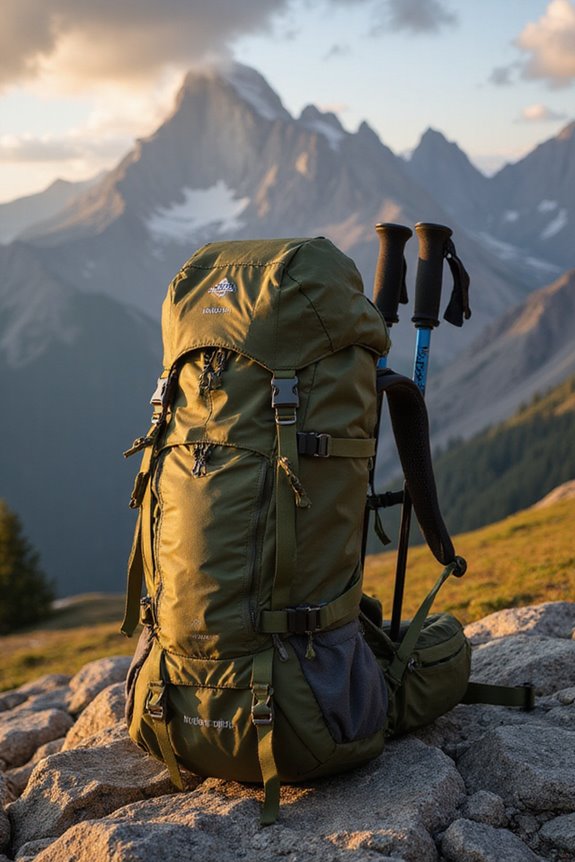
How does one truly prepare for the whims of nature while backpacking? It starts with understanding local weather patterns and terrain challenges. Before heading out, a hiker should research typical climates of their destination—think mountains with sudden snowstorms or coastal trails where sun and rain can mingle like old friends. Pack layers for quick changes, especially in unpredictable environments. In arid regions, expect hot days and chilly nights, so lightweight clothes for daytime and warm layers for nighttime are crucial. A well-chosen backpack can make all the difference; waterproof compartments and durable zippers are essential in wet conditions, while breathable materials keep comfort high in the heat. Ultimately, being prepared means embracing nature’s surprises, not just surviving them.
Understanding Pack Features and Their Benefits
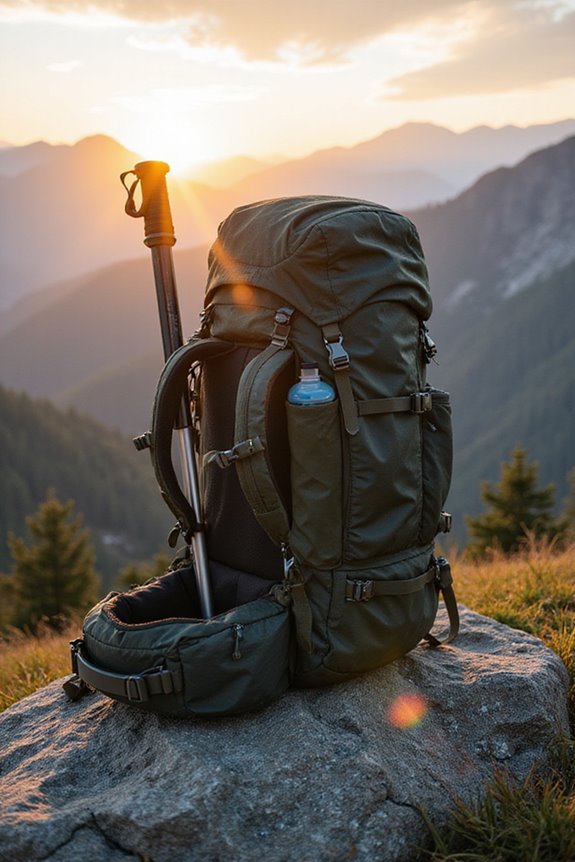
Choosing the right backpack isn’t just a matter of picking out a pretty color; it’s about understanding the features that will enhance every step of the journey. For instance, the pack weight can greatly impact comfort on long hikes. Internal frame backpacks are fantastic for stability, hugging the body closely to distribute that weight efficiently, while external frames let the air flow, keeping you cooler, especially on sweaty summer trails. Ventilation features, like mesh panels, work wonders in reducing sweat buildup, making your trek much more pleasant. Plus, multiple pockets help keep essentials at your fingertips, so you won’t be digging around like a raccoon in a trash can! Understanding these features can transform your backpacking experience from a chore into an adventure.
Ensuring Proper Sizing and Fit
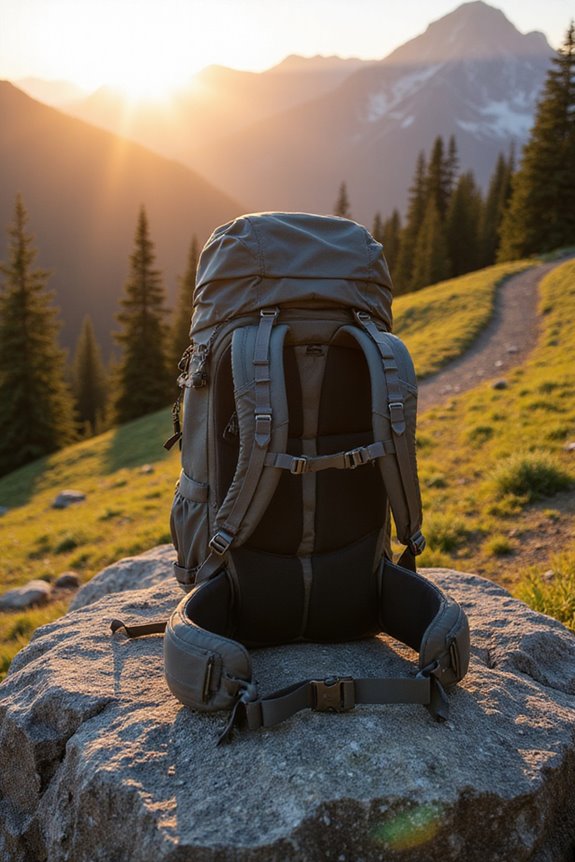
Finding the perfect fit for a backpack can feel like searching for a needle in a haystack, but it’s absolutely worth the effort. Proper sizing begins with an accurate torso measurement, taken from the C7 vertebra down to the iliac crest. This critical dimension guarantees the backpack frame aligns with the wearer’s body, allowing for effective load distribution. Some backpacks come with an adjustable harness, giving users the flexibility to fine-tune the fit. This feature is especially handy for those who seek comfort during long hikes or rugged trails. Remember, a pack that’s too big can sway and lead to discomfort, so it’s vital to try before you buy, making sure every strap is snug and every adjustment is just right.
Exploring Frame Types and Ventilation Options
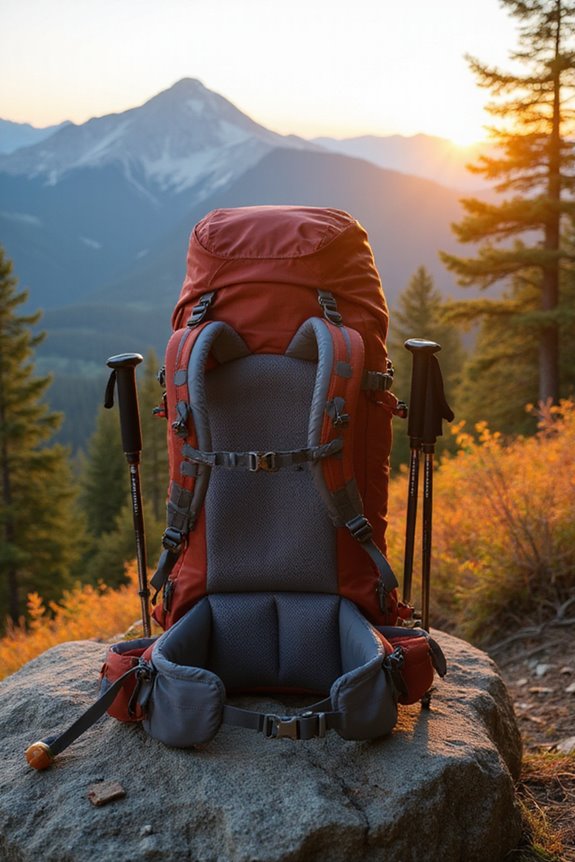
When it comes to selecting a backpack for a weekend adventure or a week-long trek, understanding the different frame types and ventilation options can make all the difference. Internal frame backpacks offer stability on rugged terrain, while external frames shine in carrying heavy, irregular loads and provide excellent ventilation. For ultralight enthusiasts, frameless packs are a great choice, albeit with less comfort under weight. Ventilation technologies, like suspended mesh back panels and airflow channels, keep sweat at bay, making those long hikes more enjoyable. The right frame flexibility guarantees weight is distributed evenly, reducing fatigue. With these features in mind, adventurers can find the perfect backpack that balances comfort, support, and breathability for every journey.
Evaluating Durability and Water Resistance
After understanding frame types and ventilation options, it’s time to think about how long that backpack will last and how well it can handle a surprise downpour. Durability starts with the right materials; look for high-denier fabrics like 1000D nylon or ripstop designs that resist tears. Abrasion-resistant options like Cordura guarantee your pack can withstand rough trails. Water resistance is key, too—DWR coatings can help, but consider materials with certifications like IPX for superior waterproofing. Features like taped seams and roll-top closures offer added protection. Remember, reinforced seams and sturdy zippers prevent wear and tear when the going gets tough. Investing in a durable pack means fewer worries and more adventures, rain or shine!
Considering Organization and Access
How does one guarantee that every piece of gear is easily accessible while hiking? Effective packing strategies play a significant role here. Start by placing heavy items close to your back, ensuring balance and comfort. Light gear, like sleeping bags, belongs at the bottom, while essential items should be at the top for quick access. Using designated zones helps; think of the bottom for bulky gear, the core for heavier items, and the top for essentials like snacks and rain gear. Quick-access pockets on hip belts are perfect for frequently used items, keeping everything at your fingertips. Remember, a well-packed backpack not only enhances your hiking experience but also keeps your mind clear, letting you focus on nature’s beauty instead of rummaging through your pack!
Setting a Budget and Choosing the Right Brand
Packing a backpack is only part of the adventure; the other half is ensuring that the choice of pack fits within a budget and aligns with personal preferences. Backpacking packs can vary widely, from budget models like the LITHIC Expedition 65L, priced around $98, to high-end packs from brands like Arc’teryx, which can cost up to $499. Many find that mid-range options, such as the Osprey Exos 48, strike a great balance between quality and price. When selecting a brand, consider names like Gregory for comfort or REI Co-op for budget-friendly performance. Ultimately, it’s about finding that sweet spot where performance meets your wallet, ensuring your adventures are both enjoyable and financially sound.
Frequently Asked Questions
How Do I Clean and Maintain My Backpack?
To clean and maintain a backpack, individuals should consider the materials and use appropriate cleaning techniques. Regularly inspect, wash gently, air dry, and store properly to extend the backpack’s lifespan and preserve its functionality.
Can I Use a Backpack for Day Hikes?
Amidst nature’s embrace, a well-chosen backpack cradles day hike essentials. Ideal backpack size, typically 20 to 30 liters, guarantees comfort, allowing adventurers to traverse trails unhindered while carrying everything they need for exploration.
What Should I Pack Inside My Backpack?
When considering what to pack inside a backpack, one must prioritize packing essentials while ensuring proper weight distribution. Items like shelter, clothing, food, and safety gear are vital for a successful outdoor experience.
How Do I Adjust My Backpack for Comfort?
Adjusting a backpack for comfort involves precise sizing and weight distribution. A well-fitted hip belt transfers load effectively, while shoulder and sternum straps enhance stability, ensuring a balanced experience that reduces strain on the body during movement.
Are There Backpacks Specifically Designed for Women?
Yes, there are backpacks specifically designed for women, featuring female-specific designs that enhance comfort and weight distribution. These packs accommodate smaller torsos and wider hips, ensuring better fit and support during outdoor activities.

